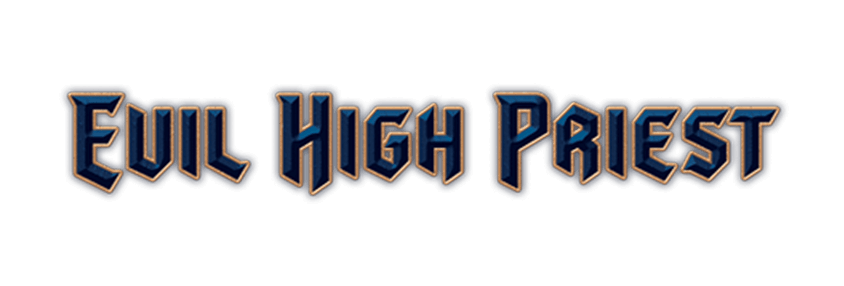Opener of the Way Cult Board
First, all Opener sites are, in effect, “Starts”; i.e., they can be completed in theoretically any order. Some do have requirements which must be met first, but these are conditions, rather than the pattern of unlocking found on other cult boards.
Second, on the left side of the board is the Evolution track. This is divided into three levels, indicating your acolyte’s degeneration into a Thing of the outer spheres. The first stage is Mutant, the second is Abomination, and the last is Spawn of Yog-Sothoth. Your acolytes can enter these stages, or advance through them, by unlocking or activating various sites. While on this track, acolytes are no longer available for placement on sites, and cannot be sacrificed to defend against an investigator attack. They do provide a passive defense against attacks, which is as good as (or better) than sacrificing them. Each of your Mutants blocks 2 points of a raid, each Abomination 3, and each Spawn 4. Acolytes on the Evolution track are also immune to all monsters or effects that target acolytes, such as the Fungi from Yuggoth or the Yithian. However, the only activity they can carry out only is to progress down the track, or to get discarded in place of a Spellbook (Abominations or Spawns only). You can discard an Abomination or a Spawn anytime you need a spellbook, and they can be “stolen” by a Byakhee’s special ability (which doesn’t target acolytes!)
Another unusual feature of this cult board are the fact that It boasts several repeatable attacks! These are actually triggered by using the Site, not simply by taking the Elder Sign. So for example, if a player unlocks the site that costs 2 Magic, he could choose not to send his minion to the Mutant box, and thus avoid the 1d6 investigator attack. Of course, usually it’s best to use the site.
Opener of the Way Cult Board
First, all Opener sites are, in effect, “Starts”; i.e., they can be completed in theoretically any order. Some do have requirements which must be met first, but these are conditions, rather than the pattern of unlocking found on other cult boards.
Second, on the left side of the board is the Evolution track. This is divided into three levels, indicating your acolyte’s degeneration into a Thing of the outer spheres. The first stage is Mutant, the second is Abomination, and the last is Spawn of Yog-Sothoth. Your acolytes can enter these stages, or advance through them, by unlocking or activating various sites. While on this track, acolytes are no longer available for placement on sites, and cannot be sacrificed to defend against an investigator attack. They do provide a passive defense against attacks, which is as good as (or better) than sacrificing them. Each of your Mutants blocks 2 points of a raid, each Abomination 3, and each Spawn 4. Acolytes on the Evolution track are also immune to all monsters or effects that target acolytes, such as the Fungi from Yuggoth or the Yithian. However, the only activity they can carry out only is to progress down the track, or to get discarded in place of a Spellbook (Abominations or Spawns only). You can discard an Abomination or a Spawn anytime you need a spellbook, and they can be “stolen” by a Byakhee’s special ability (which doesn’t target acolytes!)
Another unusual feature of this cult board are the fact that It boasts several repeatable attacks! These are actually triggered by using the Site, not simply by taking the Elder Sign. So for example, if a player unlocks the site that costs 2 Magic, he could choose not to send his minion to the Mutant box, and thus avoid the 1d6 investigator attack. Of course, usually it’s best to use the site.

